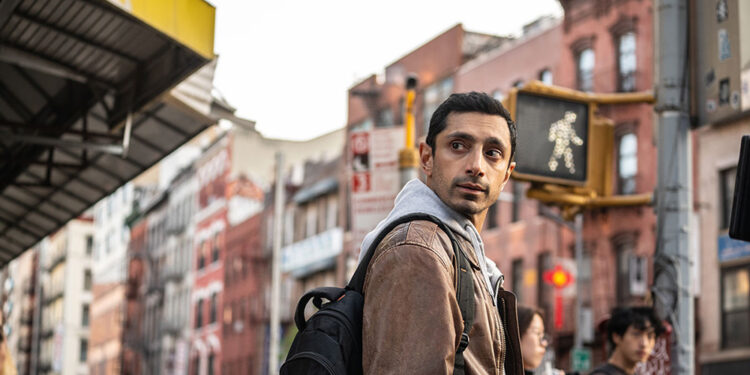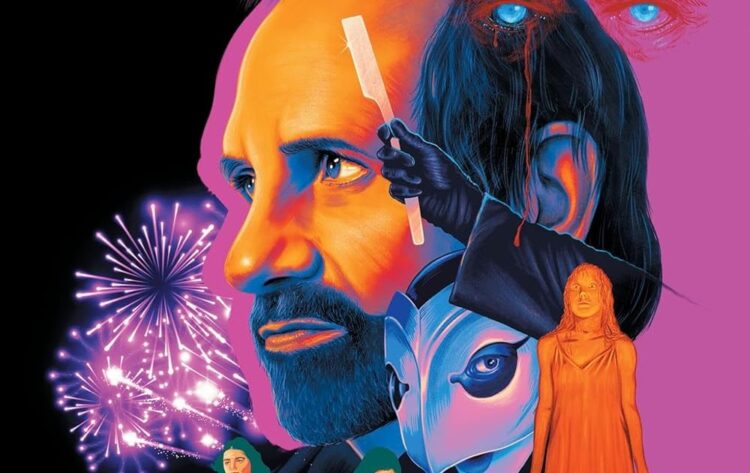

It seems appropriate to read about some of our greatest filmmakers during the fall. (Festival season! Prestige pics! Megalopolis mania!) Plus, a guide to cinema for kiddos from A24, a look at one of Schwarzenegger’s most fun flicks, and lots of noteworthy novels. And watch for one more roundup before the end of 2024.
The De Palma Decade: Redefining Cinema with Doubles, Voyeurs, and Psychic Teens by Laurent Bouzereau (Running Press)
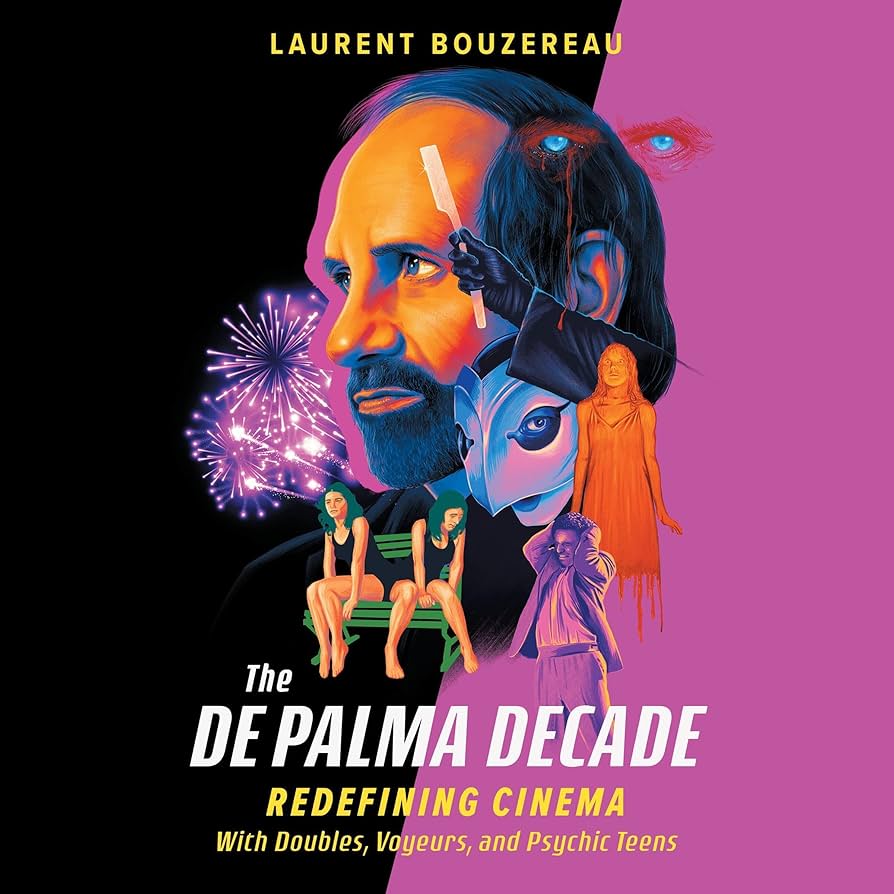
Documentary filmmaker and occasional author Laurent Bouzereau has found a novel way to approach the work of Brian De Palma. In The De Palma Decade, he focuses specifically on seven films that made the director one of filmdom’s most famous and infamous figures: Sisters, Phantom of the Paradise, Obsession, Carrie, The Fury, Dressed to Kill, and Blow Out. It was a remarkable run, and Bouzereau adroitly analyzes what makes them so powerful. The book also features interviews with De Palma himself as well as cast and crew members. “Blow Out today is considered this great masterpiece,” De Palma says. “When it came out it was considered a disaster. And as I’ve always said, you’re judged against the style of the day. But that style changes. Remember Cecil B. DeMille was the most successful director of all times, and his movies are now like the worst things you’ve ever seen.” This is a fantastically entertaining and essential study of an iconic director. Let us hope that Bouzereau eventually tackles De Palma’s post-Blow Out works in a similar fashion.
Hey Kids, Watch This! (A24)

As a parent, I get excited any time I see a fun and intelligent attempt to introduce children to great cinema. The latest book from A24 is one of the most strikingly creative examples yet. Hey Kids, Watch This! offers more than 100 film ideas divided by ages: “Pre-Schoolers,” “Little Kids,” “Big Kids,” and “Tweens.” Each entry features genre, a plot summary, logistical details (cast, running time, etc.), some neat-o illustrations, trivia, and keywords. (For My Life as a Dog: “Chosen families,” “Summertime Sadness,” and “Tween fight club.”) It is all presented with good humor and deep affection for cinema. Any book for children that includes Little Fugitive, Kes, and Where Is the Friend’s House? is to be treasured.
A Complicated Passion: The Life and Work of Agnès Varda by Carrie Rickey (W.W. Norton & Company)
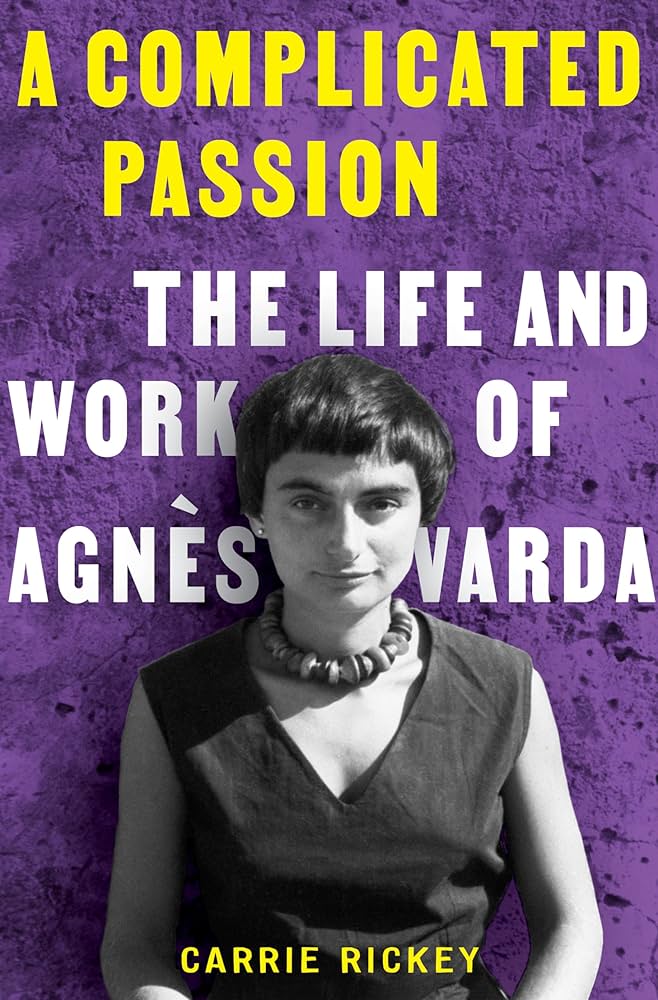
Agnès Varda has been gone for more than five years now, and yet it still feels like the diminutive director is out in the world, at work on a new project. Carrie Rickey, the longtime Philadelphia Inquirer film critic, brings Varda to vivid life in the supremely entertaining A Complicated Passion. “Complicated” is appropriate, as it describes pretty much every element of Varda’s life––her films, her marriage to Jacques Demy, her relationship with Jean-Luc Godard. But Rickey’s fine biography is more than just a catalog of gossip. It’s also a proper acknowledgement of cinematic greatness. “She was survived by her two children, five grandchildren, three cats, forty-four films, 20,400 photographic negatives, and artworks in museums and private collections all over the world,” Rickey writes. “These numbers quantify personal and professional accomplishments. Beyond them were Varda’s greatest legacy––her immeasurable catalytic effect on those she inspired to protest inequality, to recycle, to pick up a movie or still camera, to find new forms for art.”
Final Cut by Charles Burns (Pantheon)
One of the great cinema might-have-beens of the last few decades is a David Fincher-directed take on Charles Burns’ haunting graphic novel Black Hole. While the film is unlikely to be revived, the themes of its story––disaffection, frustration, paranoia––certainly align with Fincher’s work. Those themes are also present in Burns’ latest graphic novel, Final Cut. There is a distinct air of melancholy to be found on every page of this look at the obsessive pursuit of one’s art. The protagonist is Brian, an artist and die-hard film lover (the heartbreaking ending of Invasion of the Body Snatchers makes him weep) with some deep mental-health issues. His muse, Laurie, is the star of a horror film being made by Brian and his friend, Jimmy. Final Cut is centered on the process of creating this Body Snatchers-inspired flick, but Brian’s sad fantasies are present throughout. The result is somber and moving, with the character of Laurie a real stand-out.
Total Recall: The Official Story of the Film by Simon Braund (Titan Books)
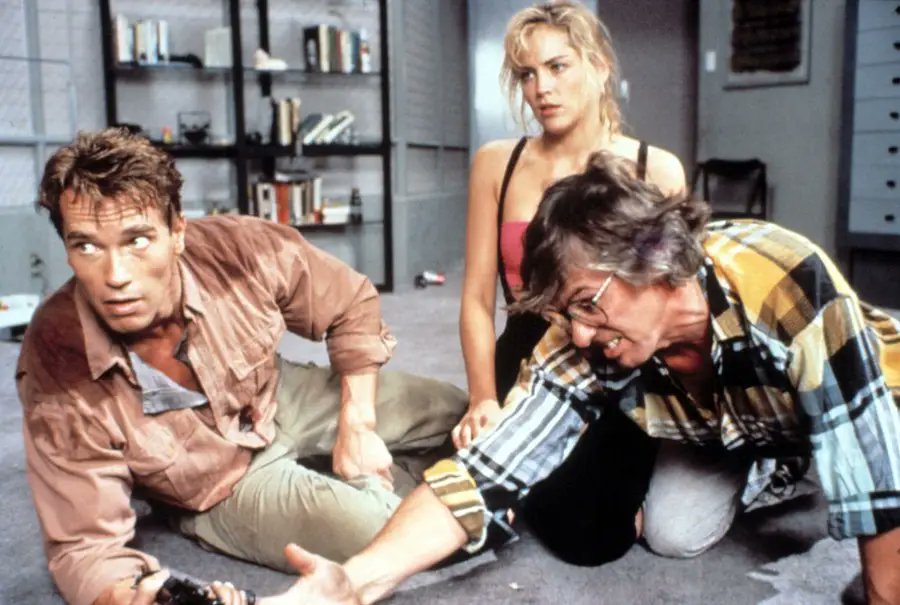
Released at the height of an era in which Arnold Schwarzenegger could do no wrong, Total Recall is a blast of balls-to-the-wall Verhoevian energy and graphic action. Total Recall: The Official Story of the Film is a loving reminder of the delirious highs of this Philip K. Dick adaptation. The behind-the-scenes details intrigue, but most fascinating is the section detailing David Cronenberg’s aborted adaptation. “Filming was set to begin in March 1985, but already storm clouds were gathering,” writes Braund. Yes, “creative disagreements” killed the project, but we do have the opportunity to admire some of the concept art from this version-that-never-was.
Ingrid Caven: I Am a Fiction (Fireflies Press)
Fireflies Press is featured often in this column, and rightly so; each entry in its Decadent Editions series (highlighting films like Inland Empire and Goodbye, Dragon Inn) is a must-own, as are the first two entries in its One Two Many series. The latter started with Whit Stillman: Not So Long Ago and continues with Ingrid Caven: I Am a Fiction. This appreciation of the German actress and singer––a former Mrs. Rainer Werner Fassbinder––features essays from the likes of Bertrand Bonello and Rachel Kushner (author of Creation Lake, a new novel featured later in this column), photos, and a new interview with Caven. Her comments about Fassbinder are remarkably insightful (“He acted like the working-class man next door, in his leather jacket, but he came from an elevated cultural milieu”) and so is I Am a Fiction.
The Soul of Wes Craven by Joseph Maddrey (Harker Press)
Joseph Maddrey’s biography of the late Wes Craven is a loving tribute, and the director of greats like The Hills Have Eyes and A Nightmare on Elm Street deserves that. Over more than 400 pages, the book covers every section of Craven’s life––childhood in Ohio, his years as a college professor, early days involved with adult films, his cinematic highs and lows, and finally his far-too-soon death. The final chapters are somber, due to Craven’s declining health but also his disappointment at the state of his career. Filmmaker Tom McLoughlin recounts a conversation with Craven at an early 2010s Masters of Horror dinner: “Wes said, ‘I gotta be honest with you, I’d much rather have a career like you’ve had.’ I said, ‘Are you kidding me? You are Wes Name Above the Title Craven! You have to love the fact that your name is associated with so many classics of the genre.’ He goes, ‘As wonderful as that is, it’s not what I wanted my career to be. I just hate that it means I can’t explore other things.’” The Soul of Wes Craven shows that his filmography was actually quite varied. And it makes a convincing argument that even lesser Craven is worth cherishing.
Quick hits
Ken Russell and Alan J. Pakula both had a knack for bringing provocative stories to the screen — OK, Russell’s films were a bit more provocative — and their work continues to influence cinema. Now, both filmmakers have earned entries in University Press of Mississippi’s long-running Conversations With Filmmakers Series. Ken Russell: Interviews, edited by Barry Keith Grant, is full of gems from the man behind The Devils, Women in Love, Tommy, and Altered States. A sample, from a 1992 interview: “How do you feel about being labeled as an iconoclast?” “Wasn’t Jesus Christ an iconoclast? Oliver Reed used to call me Jesus, so I’m in good company!” There is no cheerful blasphemy in Alan J. Pakula: Interviews, edited by Tom Ryan, but there are lots of insightful words from the filmmaker whose paranoia trilogy—Klute, The Parallax View, and All the President’s Men—are unbeatable 1970s classics. Throughout, the late director is honest and thoughtful. “There is one move in All the President’s Men which takes place in the Library of Congress,” Pakula shared in a 1985 interview. “[T]he camera pulls up, and it pulls up to the top of the library. They are in this huge, dome-like building, and they are dwarfed. It was a tour de force camera move, but it was making a point: ‘My God, how tiny these people are, and how endless the search!’”
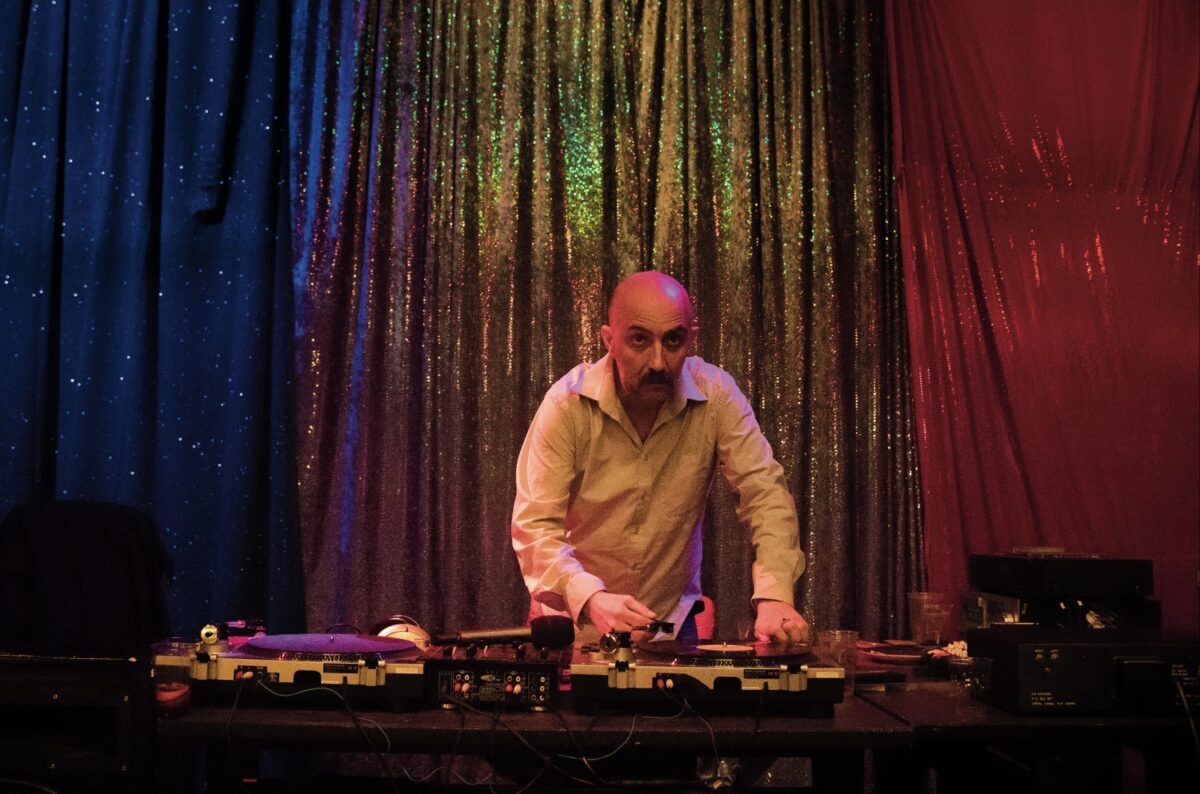
Also new in the series is Gaspar Noé: Interviews, edited by Geoffrey Lokke. As you might expect, this one is full of pearls, such as the following, from a 2002 chat around the release of Irreversible: “If you see people walking out—some people even fainted in Cannes at my movie, in the film festival—I don’t think it’s bad that they feel this way.” Plus, there is a delightfully rambling 2015 conversation between Noé and Abel Ferrara.
Meanwhile, filmmakers like Dennis Hopper, Sam Peckinpah, and Monte Hellman are among those profiled in Dirty Real: Exile on Hollywood and Vine with the Gin Mill Cowboy by Peter Stanfield (Reaktion Books). These are figures whose success was gained “by hard-scrabble labour, from experience earned on the road, with sweat and dirt.” Stanfield astutely writes that Humphrey Bogart—whose “characters did not seek favours, were not obsequious or resentful”—provided a link between old and new Hollywood.”
Two legends who were most certainly part of old Hollywood are the subject of Moguls: The Lives and Times of Hollywood Film Pioneers Nicholas and Joseph Schenck by Michael Benson and Craig Singer (Citadel). This is a wild tale, one replete with famous and infamous folks, as well as lots of gossip. And a woman who was a legend in multiple decades is profiled in One Tough Dame: The Life and Career of Diana Rigg (University Press of Mississippi) by Herbie J Pilato. It should come as no surprise that a chunk of the book is devoted to her stint as Emma Peel in the great 60s BBC series The Avengers. But this was just one part of her career, which also included stage work, film (most notably as Mrs. James Bond in On Her Majesty’s Secret Service), a memorable turn on Game of Thrones, and a killer role in Edgar Wright’s underrated Last Night in Soho. The latter saw Rigg give, says Pilato, a “compelling swan song performance.”
The aforementioned Game of Thrones is still being wrestled with by fans, and so, too, is LOST. The ABC series is pondered in great detail by authors Emily St. James and Noel Murray in LOST: Back to the Island (Abrams). The authors debate the final episode, “The End,” with deep passion and great humor. Murray makes the point that perhaps the series’ “afterlife ending” was necessary: “LOST has always taken death seriously. Its pilot quite literally asks how these characters will survive a life-and-death situation, and by the time we’ve reached the finale, the show has killed off a tremendous amount of its cast.” Beloved series that aired several decades before LOST are covered in Gold Dust on the Air: Television Anthology Drama and Midcentury American Culture (University of Texas Press) by Molly A. Schneider. This engaging analysis of programs like Playhouse 90 and Studio One may inspire readers to track down these influential anthology series.
Dune: Part Two wrapped up the first novel in Frank Herbert’s Arrakis saga earlier this year, and now DUNE: The Graphic Novel, Book 3: The Prophet (Abrams), by Brian Herbert and Kevin J. Anderson (and illustrated by Raúl Allén and Patricia Martín) does the same in graphic novel form. It is quite fun to see Feyd-Rautha and others portrayed in this different way, and also fun are a trio of must-haves for the D&D faithful: Dungeons & Dragons Worlds & Realms (Ten Speed Press), which studies 50 years of world-building; Puncheons & Flagons: The Official Dungeons & Dragons Cocktail Book (Ten Speed Press) by Andrew Wheeler (you need to try the Necromancer); and a “recipe deck” called Heroes’ Feast: The Deck of Many Morsels by Kyle Newman, Jon Peterson, Michael Witwer, and Sam Witwer.
Lastly, Obitchuary: The Big Hot Book of Death by Spencer Henry and Madison Reyes (Plume) is a fascinating study of all things death and dying, written by two popular podcast hosts. It is full of strange tidbits; I was unaware that in 2015 the skull of F.W. Murnau was stolen from his tomb in Germany. (Must have been a die-hard Shadow of the Vampire fan.)
Novels in brief
Autumn seems a fine time to fall back into reading novels, and a few of our chosen selections have been recently (or are soon-to-be) adapted. The film of Colson Whitehead’s The Nickel Boys earned raves at Telluride and New York, and this story of two “delinquents” and friends might just be the most moving novel of its author’s career. I was unable to catch Athina Rachel Tsangari’s adaptation of Jim Crace’s 2013 novel Harvest (Knopf) at September’s Toronto International Film Festival, and I’m sorry I missed it; the novel is a devastating account of upheaval in a small English village. Laura Dave is teaming with her husband, Maestro screenwriter Josh Singer, to adapt her novel The Night We Lost Him (S&S/Marysue Rucci Books) for an upcoming Netflix series; it follows the family of a recently deceased hotel magnate as they attempt to piece together their father’s mysterious passing. And I am very much looking forward to the planned Netflix series based on Bella Mackie’s dark comedy How to Kill Your Family (Abrams). Anya Taylor-Joy will star as a young woman intent on revenge against the aristocratic family that destroyed the life of her late mother.
A current series on my must-get-to-this list is the acclaimed AppleTV+ spy thriller Slow Horses. The first book in Mick Herron’s series, Slow Horses (Deluxe Edition) (Slough House) by Mick Herron (Soho Crime), is a fine place to start; I’m not sure there could be better casting than Gary Oldman as the delightfully grimy Jackson Lamb. Herron’s latest, The Secret Hours (Soho Crime), is an involving standalone story “set in the MI5 world” of Slow Horses.
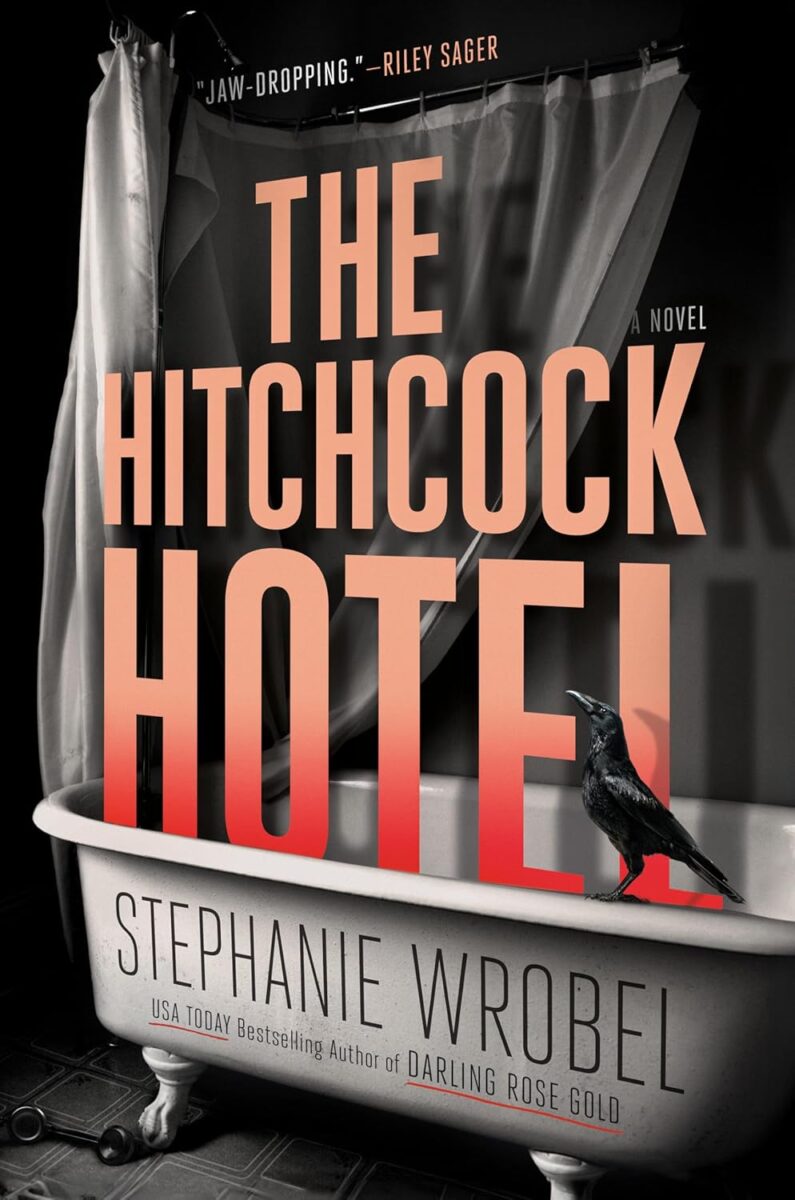
A pair of new novels are centered around the world of cinema––to some degree. In the diabolically clever The Hitchcock Hotel by Stephanie Wrobel (Berkley), a fan of Alfred Hitchcock opens a themed-hotel dedicated to the Vertigo director. When he invites old friends for a stay, you can guess what happens; Hitch himself would be impressed with this suspenseful treat. And The Seventh Veil of Salome by Silvia Moreno-Garcia (Del Rey) is set in 1950s Hollywood, as a young Mexican actress lands the lead in a big-budget production and behind-the-scenes drama ensues.
A number of noteworthy female authors have recently authored standout novels. The Ministry of Time by Kaliane Bradley (Avid Reader Press / Simon & Schuster) is an inventive (and very funny) time-travel romance. Much darker is Lady Macbeth: A Novel by Ava Reid (Del Rey), a hypnotic reimagining of Shakespeare’s cunning Lady. The Most by Jessica Anthony (Little, Brown and Company) is a short, 1950s-set novel about a housewife who decides to stay in an apartment complex pool for, well, eight hours. Bright Young Women by Jessica Knoll (S&S/ Marysue Rucci Books) is a smart, fearless true crime-inspired thriller, while Creation Lake by Rachel Kushner (Scribner) is the coolest female-fronted spy thriller in eons. And Society of Lies by Lauren Ling Brown is a dark academia mystery involving Ivy League secret societies.
Horror fans will slurp up three recent vampire novels: the darkly funny So Thirsty by Rachel Harrison (Berkley), features an all-too-identifiable heroine; The Madness by Dawn Kurtagich (Graydon House) is a Wales-set, modern interpretation of Dracula; and and Lucy Undying: A Dracula Novel by Kiersten White (Del Rey) moves the character of Lucy Westenra to the forefront for a compelling gothic fantasy. William by Mason Coile (G.P. Putnam’s Sons) is a whip-smart artificial intelligence sci-fi horror hybrid, while The Hike by Lucy Clarke (G.P. Putnam’s Sons) is a cracking thriller about four friends spending on a terrifying camping trip in Norway. Holly Jackson’s The Reappearance of Rachel Price (Delacorte Press) explores what happens when the only witness to a disappearance becomes part of a true-crime documentary. Sacrificial Animals by Kailee Pedersen (St. Martin’s Press) is a disturbing story of brothers summoned back to rural Nebraska by their dying father, while The Night Guest by Hildur Knútsdóttir (Tor Nightlife) is a Reykjavik-set chiller about a woman suffering from fatigue who somehow has walked more than 40,000 steps in one night — and has no memory of any of it. And The Lightning Bottles by Marissa Stapley (Simon & Schuster) is a music-world mystery set in the 1990s that will grab anyone with a love of grunge music. The allusions to real-life figures are obvious, but Stapley takes the story into surprising places.
Lastly, Marvel: What If … Wanda Maximoff and Peter Parker Were Siblings? (A Scarlet Witch & Spider-Man Story) by Seanan McGuire (Random House Worlds) is another pleasurable installment in Marvel’s ongoing series. This one imagines our friend Wanda adopted by a loving couple known as… Uncle Ben and Aunt May.
New to Blu-ray and 4K
Jane Schoenbrun’s I Saw the TV Glow is, to my mind, the best film so far this year. We should all be thankful that A24 has brought this mysterious, mesmerizing stunner to Blu-ray; the release includes commentary by Schoenbrun and star Brigette Lundy-Paine, as well as six postcards featuring photography by Josiah Rundles and Spencer Pazer. Right behind TV Glow on my list of 2024 faves is George Miller’s phenomenal Furiosa. While the Warner Home Entertainment release on Blu-ray and 4K includes a number of enticing bonuses, nothing tops the film itself; the performances of Anya Taylor-Joy and Chris Hemsworth rank among 2024’s finest.
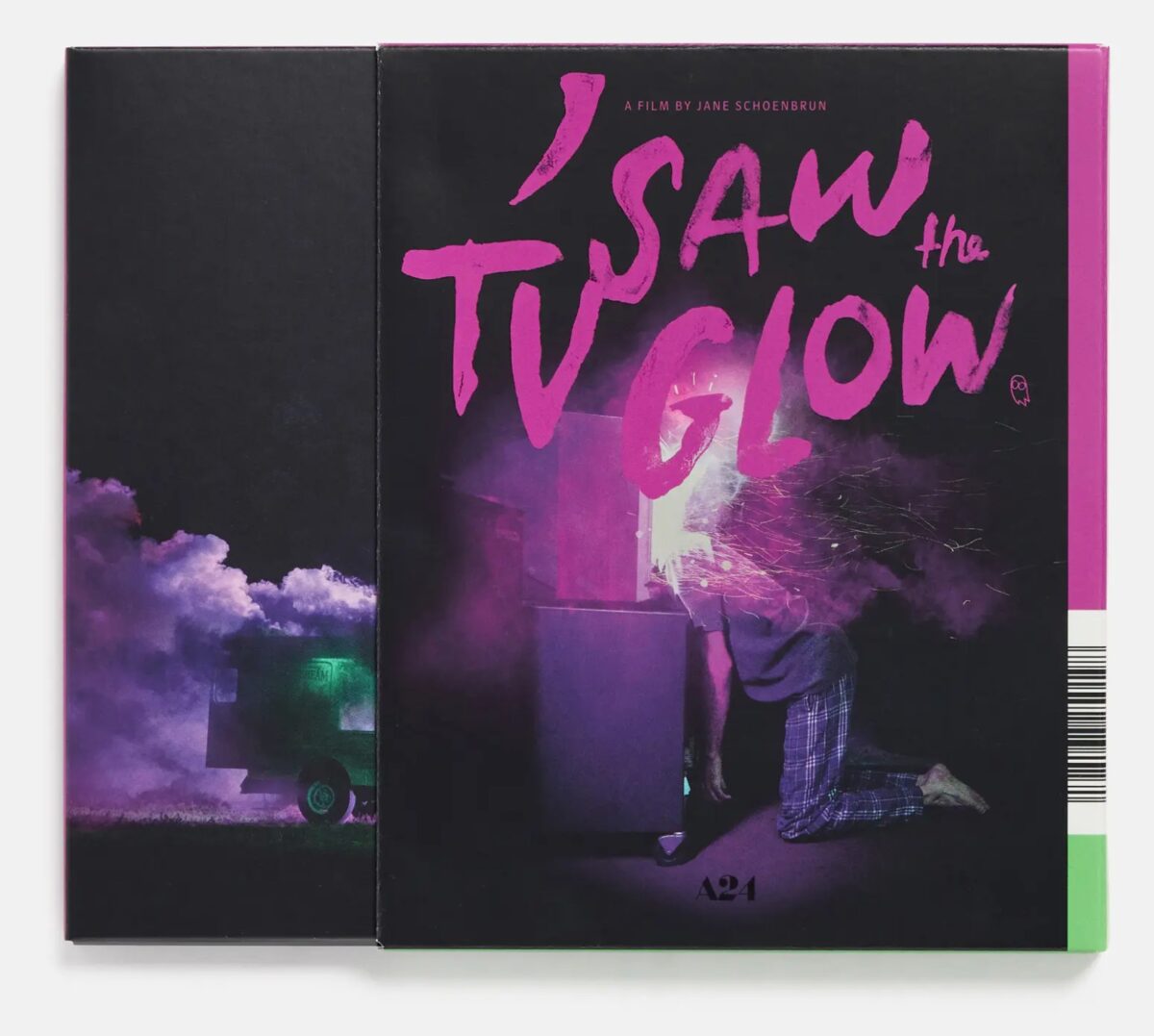
This year’s Twisters was a surprisingly effective hit that had the good fortune of starring two of the hottest (in every sense) actors in the world. It also inspired many to go back and watch the original, Twister (Warner Home Entertainment). Jan de Bont’s film looks smashing on 4K, and the release includes a new feature that considers its legacy.
And when it comes to legacy, few films have made a greater impact than this column’s final four noteworthy releases. Peckinpah’s Pat Garrett and Billy the Kid (Criterion), co-starring one Bob Dylan, features three separate versions, including the director’s “Final Preview Cut,” and an essay by novelist Steve Erickson. The 4K of Godard’s Alphaville (Kino Lorber) includes an audio commentary by novelist/critic Tim Lucas, while Kino’s 4K of Last Year at Marienbad offers a visual essay by film historian James Quandt, an interview with Volker Schlöndorff, and a short film by Marienbad director Alain Resnais. Lastly, 1980’s The Long Good Friday (Criterion) has lost none of its visceral power. John Mackenzie’s portrait of Thatcher-era gangsters has never seemed more prescient, and star Bob Hoskins was never better.
The post Recommended New Books on Filmmaking: Brian De Palma, Agnès Varda, Wes Craven, and Movies for Kids first appeared on The Film Stage.


